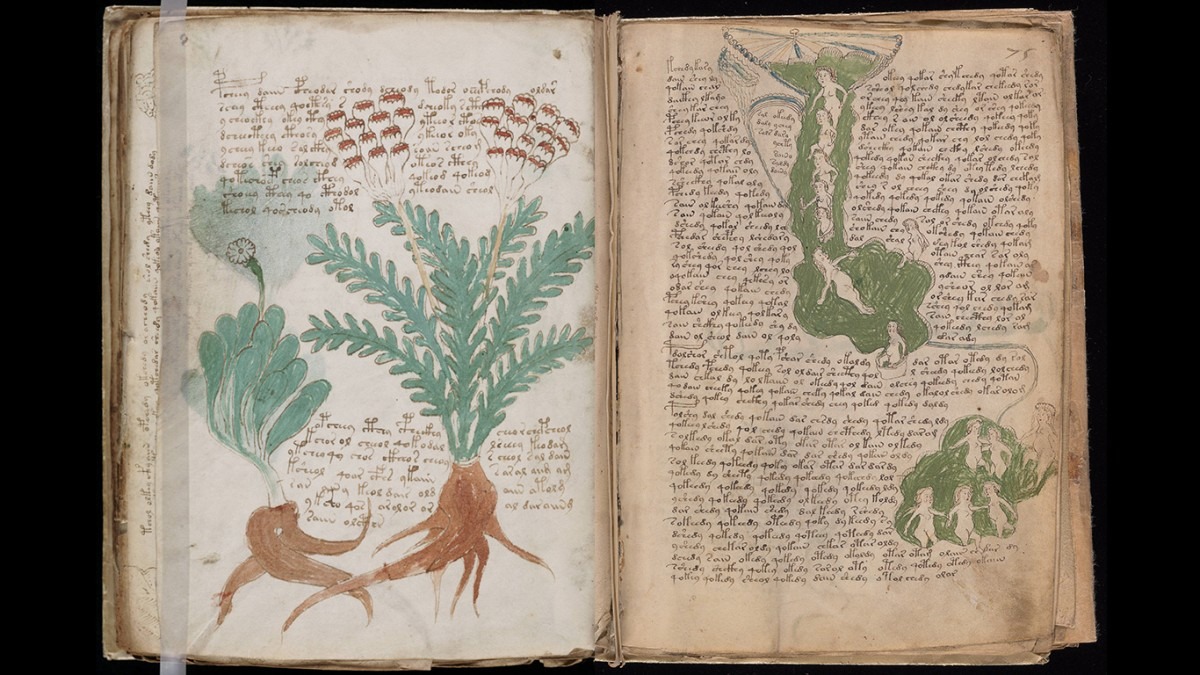Voynich Manuscript is dubbed as one of the most mysterious books, for the reason al 240 pages of the book are incredibly varied in subjects and contains weird images. Ranging from pictures of dozens of naked women, along with some men, in interconnected water bodies; various plants, of which many are completely unknown and astronomical diagrams, only a few of which match the views of the sky from Earth. Among the other eerie stuff that is contained in the book, the text is inscribed in a script and several unsuccessful attempts have been made to decipher its contents.
The Manuscript is thought to have transcribed in the early 15th century, according to the results of carbon-dating of the vellum (animal skin mainly prepared as a material to write on) it was written on and is titled after a Polish book dealer, Wilfrid Voynich, who purchased it in early 1912. Since its discovery over a century ago, cryptographers have been losing their heads to decipher its contents. Two researchers from the University of Alberta, Canada, made the latest attempts to translate its contents using artificial intelligence at their disposal.
Greg Kondrak, Professor of Computing Science at the university, and Bradley Hauer, a graduate student under him, ran an initial set of algorithms and concluded the script was likely a cypher whose base writing was in Hebrew. The language conclusions were made after comparing samples of 380 different languages in use today, from the Universal Declaration of Human Rights. Kondrak initially thought that the language was some pattern of Arabic, but was astonished when the AI program concluded it to be a Hebrew derivative.
The study of Kondrak and Hauer, published in Transactions of the Association of Computational Linguistics, states that an AI algorithm trained to recognise hundreds of languages determined the Voynich Manuscript to be encoded Hebrew. Still, the experts are in denial, and cryptographer Elonka Dunin tells Mental Floss that “I have very little faith in it. Hebrew and dozens of other languages have been identified before. Everyone sees what they want to see.”
The researchers from the University of Alberta aren’t the first ones to claim the identity of the language of the Voynich Manuscript, and they won’t be the last either. Until the full text is decoded into a meaningful expression, the manuscript remains as mysterious today as it did 100 years ago. If we are to agree with cryptographers like Dunin who think the Manuscript might be a constructed language, a complete hoax, or even a product of mental illness, it’s a mystery without a gratifying explanation.
